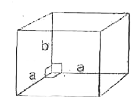The movement of water in syconoid type of canal system is
Dermal ostia → Canal → Spongocoel → Osculum
Dermal ostia → Incurrent canal Prosoyle−−−−→ Radial canal Apopyle−−−−→ Spongocoel → Osculum
Dermal ostia → Incurrent canal Prosopyle−−−−−→ Flagelated chamber Apopyle−−−−→ Excurrent canal → Spongocoel → Osculum
Pinacocytes → Choanocytes → Enteron → Osculum
The correct Answer is:B
Step-by-Step Solution:
1. Understanding Syconoid Canal System:
- The syconoid type of canal system is found in certain sponges. It is characterized by a more complex structure compared to the asconoid type, allowing for increased surface area for filter feeding.
2. Water Entry through Dermal Ostia:
- Water enters the sponge through small pores called dermal ostia. These ostia are located on the outer surface of the sponge.
3. Movement to Incurrent Canals:
- After entering through the dermal ostia, the water flows into the incurrent canals. These canals are spaces formed by the folding of the sponge body wall.
4. Transition through Prosopyle:
- The water then passes through a structure called the prosopyle, which connects the incurrent canals to the radial canals.
5. Flow into Radial Canals:
- In the radial canals, the water is further processed. These canals are lined with choanocytes (flagellated cells) that help in filtering and moving the water.
6. Passing through Apopyle:
- The water then moves through the apopyle, which is an opening that leads from the radial canals to the spongocoel.
7. Entering the Spongocoel:
- The spongocoel is the central cavity of the sponge where water collects.
8. Exiting through Osculum:
- Finally, the water exits the sponge through the osculum, which is the large opening at the top of the sponge.
Summary of Water Movement:
The sequence of water movement in the syconoid canal system is as follows:
- Dermal Ostia → Incurrent Canals → Prosopyle → Radial Canals → Apopyle → Spongocoel → Osculum
Final Answer:
The movement of water in the syconoid type of canal system is: Dermal ostia → Incurrent canals → Prosopyle → Radial canal → Apopyle → Spongocoel → Osculum.
---
- The syconoid type of canal system is found in certain sponges. It is characterized by a more complex structure compared to the asconoid type, allowing for increased surface area for filter feeding.
- Water enters the sponge through small pores called dermal ostia. These ostia are located on the outer surface of the sponge.
- After entering through the dermal ostia, the water flows into the incurrent canals. These canals are spaces formed by the folding of the sponge body wall.
- The water then passes through a structure called the prosopyle, which connects the incurrent canals to the radial canals.
- In the radial canals, the water is further processed. These canals are lined with choanocytes (flagellated cells) that help in filtering and moving the water.
- The water then moves through the apopyle, which is an opening that leads from the radial canals to the spongocoel.
- The spongocoel is the central cavity of the sponge where water collects.
- Finally, the water exits the sponge through the osculum, which is the large opening at the top of the sponge.
The sequence of water movement in the syconoid canal system is as follows:
- Dermal Ostia → Incurrent Canals → Prosopyle → Radial Canals → Apopyle → Spongocoel → Osculum
The movement of water in the syconoid type of canal system is: Dermal ostia → Incurrent canals → Prosopyle → Radial canal → Apopyle → Spongocoel → Osculum.
Topper's Solved these Questions
- BOOK - CENGAGE BIOLOGY ENGLISHCHAPTER - ANIMAL KINGDOMEXERCISE - Exercise Assertion -Reasoning Questions6videos
ANIMAL KINGDOM
- BOOK - CENGAGE BIOLOGY ENGLISHCHAPTER - ANIMAL KINGDOMEXERCISE - Exercise Chordata152videos
ANIMAL KINGDOM
- BOOK - CENGAGE BIOLOGY ENGLISHCHAPTER - ANATOMY OF FLOWERING PLANTS EXERCISE - ARCHIVES38videos
ANATOMY OF FLOWERING PLANTS
- BOOK - CENGAGE BIOLOGY ENGLISHCHAPTER - BIOMOLECULESEXERCISE - ARCHIVES26videos
BIOMOLECULES
Similar Questions
The movement of water is along
View SolutionNet movement of water is from
View SolutionDriving force for the movement of water between different systems is
View SolutionMovement of water out of the cell.
View SolutionUpward movement of water in plants is called
View SolutionThe type of crystal system shown is
 View Solution
View SolutionStatement-1: Choanocytes are characteristic cells of porifera.
Statement-2: In sycon type canal system, both radial and incurrent canals are lined by choanocytesView SolutionThe movement of water and minerals in xylem and the movement of phloem sap in phloem is respectively
View SolutionOsmosis is concerned with the movement of water only and cannot directly affect the movement of dissolved substances into the roots and through the plant.
View SolutionName the two types of skeletal system .
View Solution

